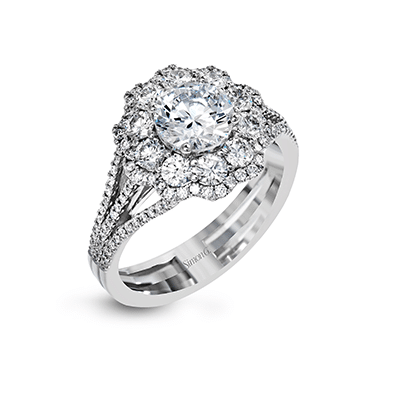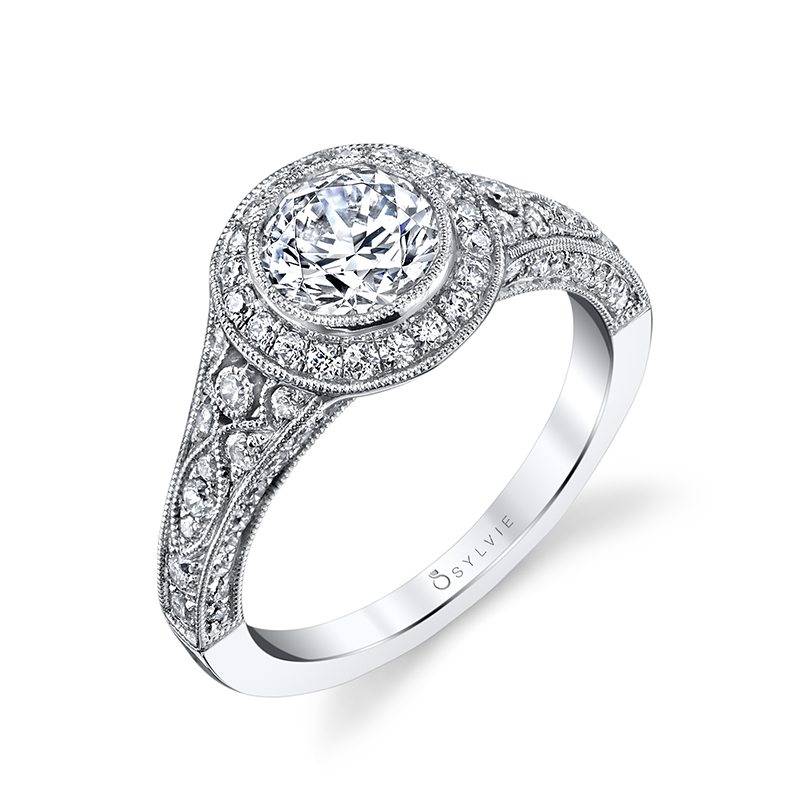Vintage Engagement Rings Styles and Settings

Engagement ring shopping can often seem overwhelming. If you’re not sure where to start, the possibilities can seem endless. Vintage engagement rings are becoming increasingly popular because they are full of character and history.
What Classifies as a Vintage Engagement Ring?
According to Estate Diamond Jewelry, a piece must be older than 20 years but less than 99 years to be considered vintage. Anything older than 99 years is considered vintage and antique. Vintage pieces are often one-of-a-kind and are a great choice if you are looking for a unique engagement ring with lots of character.
Vintage and Antique Styles
Once you decide on choosing a vintage or antique engagement ring, it’s best to decide on a time period you like best to narrow down your choices. To help provide clarity, we have outlined some popular vintage styles and settings to help make your decision easier.
Edwardian
The Edwardian Era for jewelry (1890-1915) marked the beginning of jewelers incorporating platinum into their pieces. While often considered to be an antique rather than vintage, Edwardian pieces were so popular that they continued to be produced well after 1915, making it also fit into the vintage category.
Jewelry in this era was characterized by millegrain borders and large central stones. Though diamonds were the jewel of choice, sapphires and aquamarine gemstones were often incorporated as well. Round, oval, and marquis shapes were very popular during this time. Edwardian Era jewelry often featured glamourous bands and stones. It was common to style several rings together to create a stacked ring design.
Art Nouveau
Similar to Edwardian Era pieces, Art Nouveau can also be considered antique at times. Pieces created during the Art Nouveau Era (1895-1915) were highly decorative, yet less opulent than the Edwardian Era. Marked by flowing lines and continuous designs, jewelry in this era was characterized by nature motifs. Flower-shaped pieces were very common.
Unlike the Edwardian Era that focused on large stones and bold designs, Art Nouveau placed more emphasis on the overall design of the piece, rather than the size and setting of the jewels. Opals, sapphires, and diamonds are often used in these designs.
Art Deco Era
Jewelers during the Art Deco Era (1915-1935) placed emphasis on symmetry and repetition in their designs. White gold was a popular medium and colored gemstones were commonly used. Certain synthetic gemstones were introduced during this period as a result of innovation. Sharp angles, straight lines, and detailed designs are symbols of Art Deco designs.
Retro Era
The Retro Era for jewelry (1935-1950) still has lasting impacts well into modern times today. Most jewelry from this time period was made from gold or sterling silver because of World War II. During the war, jewelers were not allowed to purchase platinum because it was used to make weaponry and other materials. Due to limited access to real gemstones, synthetic rubies became a staple in jewelers’ designs. Whereas Art Deco designs were often flat, Retro Era engagement rings were often large and 3D in its design. Oversized earrings and wide gold bracelets were common accessory pieces.
Vintage settings
Now that you have the stone, it’s time to decide what setting you want to highlight it. We have outlined five of the most popular vintage settings that would be a perfect match for your vintage stone.
Cluster
In a cluster setting, several small diamonds are grouped together to resemble a larger diamond. This setting is versatile and offers endless options. You could opt to have several small stones or one larger stone that is paired with small stones. Additionally, the possibilities are nearly endless when it comes to the shape of your engagement ring. A circular shape is one of the most common for this setting, but you can also have more unique shapes, such as a flower.
Cluster rings can have more character than a traditional four-prong setting. This style is also a great affordable option because it will be less expensive to purchase several small diamonds in comparison to a single large diamond.
Bezel
The bezel setting is a classic style for vintage engagement rings. With this setting, no prongs are used. Instead, a bezel involves a metal band that fully encircles the stone. Offering more protection than a traditional prong setting, this is one of the most secure setting types. This added protection means that the stone is less susceptible to damage. Bezel settings are most commonly used with circular or oval diamonds.
Three Stone
The three stone ring setting is said to symbolize a couple’s past, present, and future together. Alternatively, it can also represent “friendship, love, and fidelity.” Sometimes known as trilogy rings, the three stone setting typically has one large stone flanked by two smaller stones that are of equal size. The center stone has the equivalent weight to the two outer stones combined.
This setting can be a cost-effective option for a more traditional engagement ring. Rather than using a diamond for the center stone, you could opt for a beautiful sapphire flanked by two smaller diamonds. Conversely, you could have a diamond in the center with two small sapphires surrounding it. With the three stone setting, the possibilities are endless.
Pavé Setting
Also known as the bead setting, the pavé setting refers to the process of creating added detail to a metal band. A French word meaning “to pave”, the pavé engagement ring setting involves a meticulous process of drilling small holes into the surface of the metal band and placing the stones into these holes, which are then held in place by metal beads.
This setting is more commonly used with smaller diamonds that are typically 0.01-0.02 carats in size. Pavé pairs well with other ring settings, such as the cluster or halo setting. If you are looking for added shimmer and glamour, a pavé setting would be a perfect fit to use on the band of your engagement band!
Halo Setting
The halo setting involves a single central stone that is fully surrounded by several smaller stones to create a halo-like effect. Used to increase shimmer and help the central stone appear larger, this style of engagement ring is perfect for those who want a larger ring without a higher cost!
You could opt to have a gemstone, such as aquamarine, as the center stone with small diamonds surrounding it. In addition to having the added glamour, this is also a protective setting that will protect your center stone. If you’re looking to bridge vintage and modern engagement rings, we suggest looking for a halo setting.
Vintage Engagement Rings at Brittany’s Fine Jewelry
Whether you’re looking for something old or something new, Brittany’s Fine Jewelry has the perfect ring for you. If you have a vintage piece that you would like incorporated into the engagement ring of your dreams, our team at Brittany’s Fine Jewelry offers custom jewelry. Schedule an appointment or browse our showroom in Thornebrook Village today to find your perfect vintage ring!






